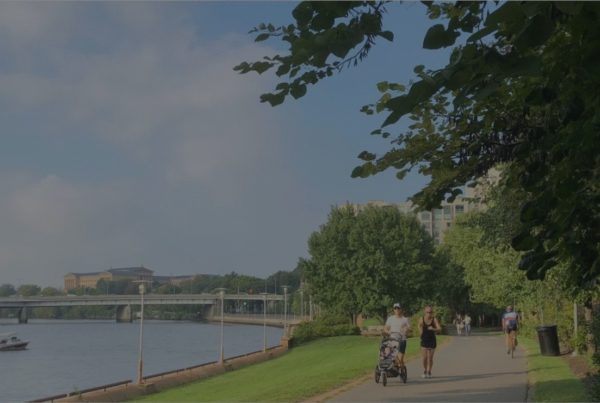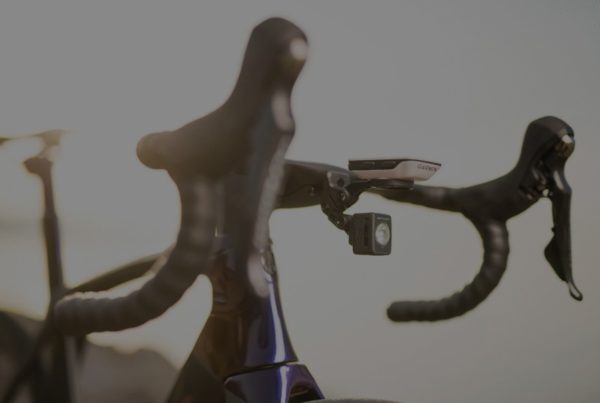“Gaining the right to the road was the cycling cause of the late nineteenth century; securing that right will be the cycling cause of the early twenty-first century.”
Those were my closing words in the introductory chapter of Bicycling & the Law. I returned to that theme in the concluding chapter:
The time has come for a second civil rights movement for cyclists. It’s time to build on the work of Albert Pope and the 1880s generation of cyclists. It’s time to press for a Cyclists’ Bill of Rights.
Based on the issues facing cyclists today, I suggested three basic themes that a Cyclists’ Bill of Rights should address:
1. Cyclists have the right to equality of infrastructure;
2. Cyclists have the right to equal treatment under the law;
3. Cyclists have the right to equal access to insurance protection.
Two weeks ago, my call for a Cyclists’ Bill of Rights became reality, when the Los Angeles City Council voted to approve a Cyclist’s Bill of Rights. That approval is apparently preliminary; as recommended by the Transportation Committee and approved by the City Council, the Cyclists’ Bill of Rights will be forwarded to the Los Angeles Department of Transportation, Planning Department, Department of Public Works, and Los Angeles Bicycle Advisory Committee, in consultation with the City Attorney and the Los Angeles Police Department, to report with recommendations on how to incorporate the principles enshrined in the ” Cyclists’ Bill of Rights” into the City of Los Angeles Bicycle Master Plan and other relevant documents and practices.
As the Council considered the motion to adopt the Cyclists’ Bill of Rights, Councilmember Tom LaBonge expressed some concern that a provision in the Cyclists’ Bill of Rights — the one stating that “Cyclists have the right to the full support of educated law enforcement” — might offend the police by implying that they are uneducated. Councilmember LaBonge is also concerned that while the Cyclists’ Bill of Rights addresses the rights of cyclists, it says nothing about their responsibilities, a “flaw” also found in the United States Bill of Rights. That’s how Bills of Rights work.
Because Councilmember LaBonge is vice-chair of the Transportation Committee, and chair of the Parks Committee, both of which will consider the Cyclists Bill of Rights before it is returned to the City Council for final approval, he will have an opportunity to edit the Cyclists’ Bill of Rights it’s returned to the City Council for final passage. It remains to be seen, therefore, what the final text of the Cyclists’ Bill of Rights will be when it comes before the City Council for final approval and incorporation into the Los Angeles Bicycle Master Plan.
Nevertheless, the City Council’s preliminary approval is an important step forward for cyclists’ rights. And that raises the question — how did my proposal for a Cyclists’ Bill of Rights end up before the Los Angeles City Council? The truth is, it didn’t. While I was busy writing Bicycling & the Law, and reaching the conclusion that we need a Cyclists’ Bill of Rights, Los Angeles cycling activist Stephen Box reached the same conclusion independently. Box and his wife Enci organized the first meeting of the Bike Writers Collective in January of 2007, at which Box presented his idea for a Cyclists’ Bill of Rights. The Bike Writers Collective enthusiastically accepted the proposal, and began working on a draft, eventually coming up with the Cyclist’s Bill of Rights — a document which independently arrives at several of the same themes I outlined in Bicycling & the Law.
Bike Writer Collective member Mikey Wally presented the first public draft of the Cyclists Bill of Rights to the Los Angeles Bicycle Advisory Committee on February 5, 2008. By March 17, the Cyclists Bill of Rights had been endorsed by the East Hollywood Neighborhood Council. The Cyclists’ Bill of Rights was next endorsed by the Silver Lake Neighborhood Council. That endorsement came on July 1; three days later, on July 4, Dr. Christopher Thompson used his car to attack cyclists Ron Peterson and Christian Stoehr on Mandeville Canyon Road. This incident was the catalyst that prompted Los Angeles City Councilmember Bill Rosendahl, to begin advocating for the Cyclists’ Bill of Rights. For several months Rosendahl worked to gain support for the idea; his hard work reached fruition on December 9, when he introduced a motion to adopt the Cyclists’ Bill of Rights, and the Los Angeles City Council voted to approve that motion.
It remains to be seen what final form the Cyclists’ Bill of Rights will take in Los Angeles. Councilmember LaBonge will be in a position to make changes that address his concerns before final approval. Stephen Box is determined to have it included in the new Bicycle Master Plan “as written, as ridden.” The battle isn’t over yet, and now is the time to get involved. Still, I can’t think of better news to end the year on.
Wishing all of you a very happy holiday season,
Bob
(Research and drafting provided by Rick Bernardi, J.D.)
This article, A Cyclists’ Bill of Rights, originally published Dec. 24, 2008 on VeloNews.
____
As I noted last week, I’ve been working on updating my website lately, and it’s finally online, with an all-new look, and all-new content. You can check out the changes to my website atbicyclelaw.com, including a new blog which will be updated with new content regularly. There’s another exciting change to my website—Velologue, my new blog about bicycle culture in all its aspects, is now online. You can link to it from bicyclelaw.com, or you can access it directly atwww.velologue.com. I hope you will visit both sites regularly.



